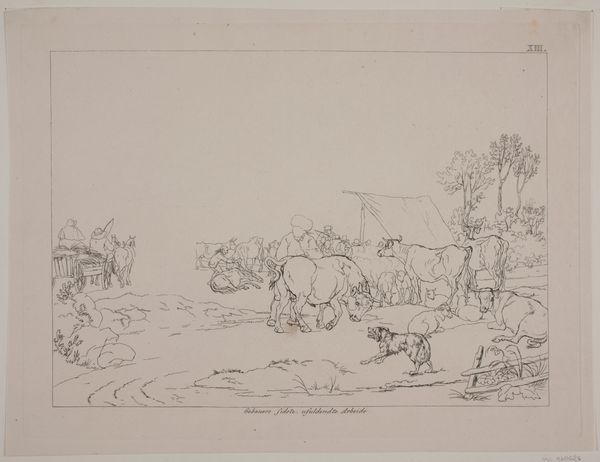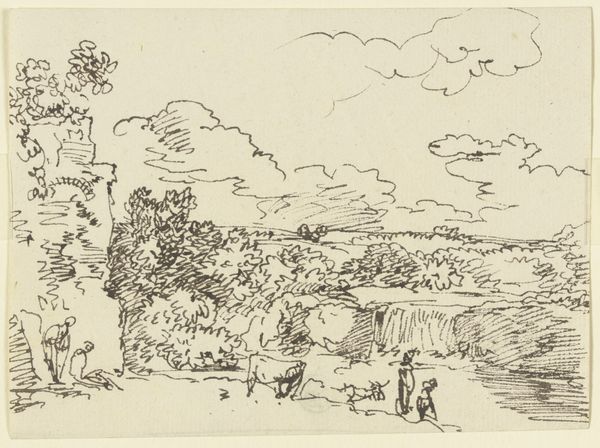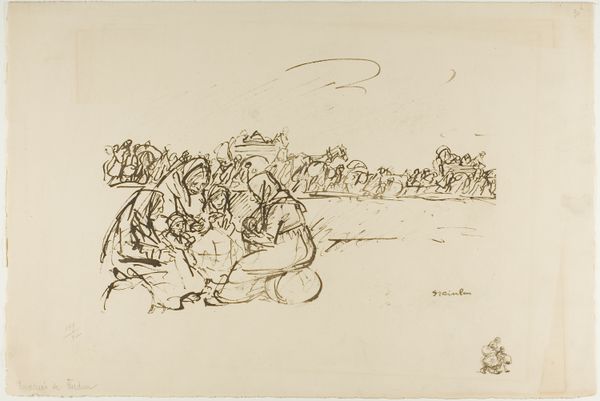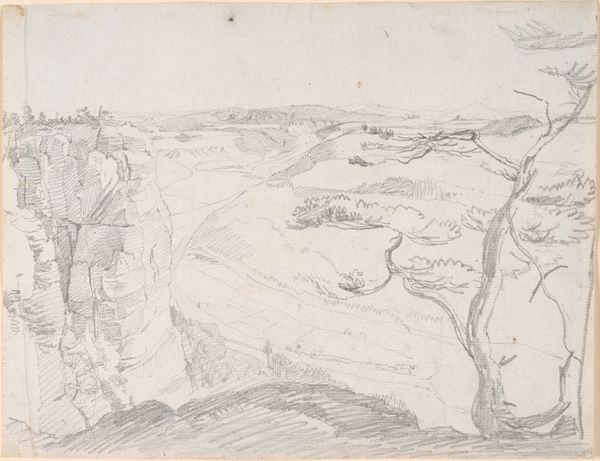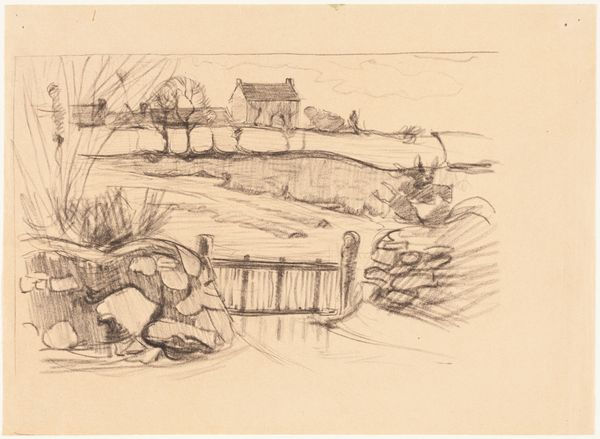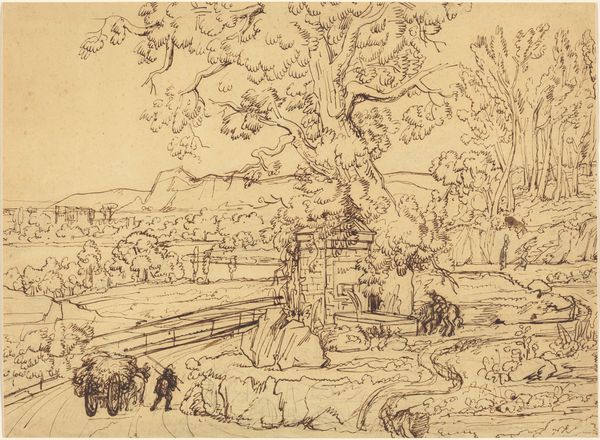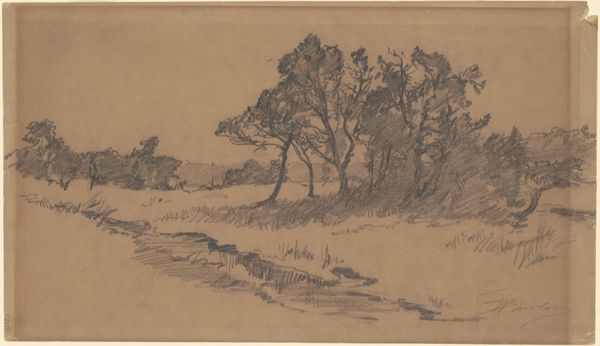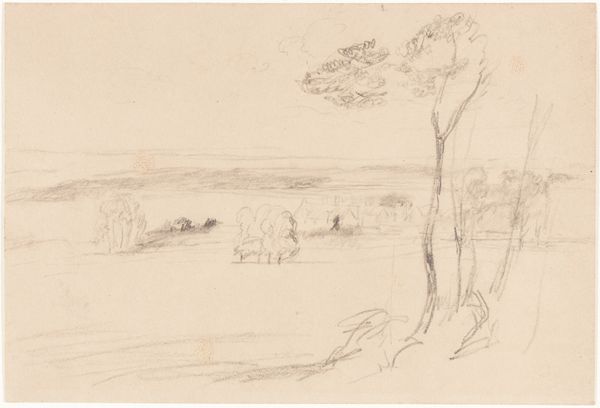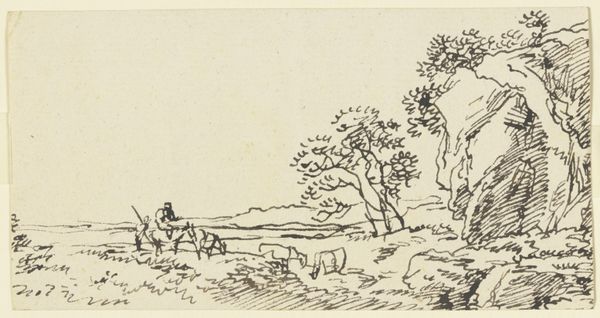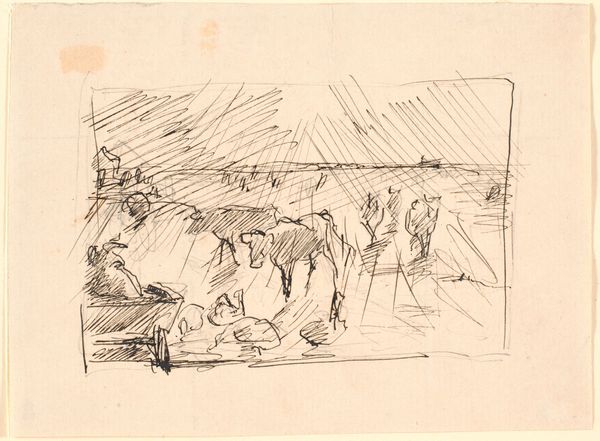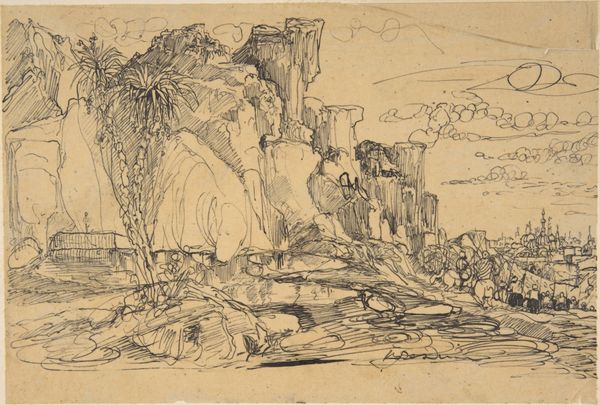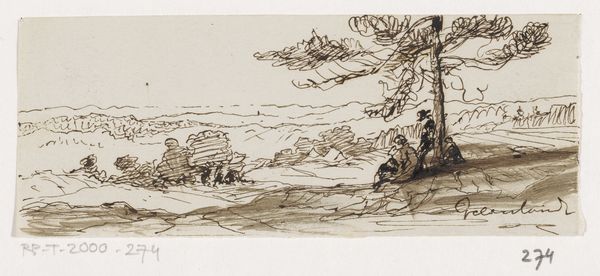
Dimensions: 144 mm (height) x 192 mm (width) (bladmaal)
Editor: Here we have Johan Thomas Lundbye's drawing "En malkescene, indklæbet side 14," dating from 1834 to 1848. It's a rather unassuming genre scene rendered with delicate lines, but there’s a stillness in the image, a peaceful depiction of rural life. How do you interpret this work within the broader context of its time? Curator: Lundbye presents a romanticized version of rural Denmark, doesn't he? It’s easy to get lost in the idyllic setting. But let’s consider this drawing against the backdrop of the 19th century. Industrialization was creeping in, threatening traditional ways of life. This scene of a woman milking a cow with a man nearby, isn't simply about capturing a peaceful moment; it subtly idealizes a social hierarchy and gendered division of labor. What power dynamics do you think are at play here? Editor: I see what you mean. The woman performs the labor, the man observes…It speaks to a system, doesn't it? Curator: Precisely. Lundbye, whether consciously or not, reproduces societal norms and expectations. Think about the rising nationalistic sentiments of the time. How might this image serve to reinforce a specific, perhaps exclusionary, idea of Danish identity? Who gets to belong in this pastoral vision, and who is excluded? Editor: That's a powerful point. I hadn’t considered how landscape could function as a social or even political statement. So the choice of subject and how it is represented really matters. Curator: Absolutely. Consider the artistic movement too. Romanticism wasn't just about pretty landscapes; it engaged with ideas of nationhood and social order, though these meanings might be coded. Does examining it this way shift your perspective? Editor: Definitely. I came in seeing a quiet moment, and now I'm thinking about power, identity, and the artist's role in shaping cultural narratives. It’s far more complex and intriguing now. Curator: Wonderful! Analyzing art through an intersectional lens unveils layers of meaning, transforming our understanding and engagement with the past.
Comments
No comments
Be the first to comment and join the conversation on the ultimate creative platform.
